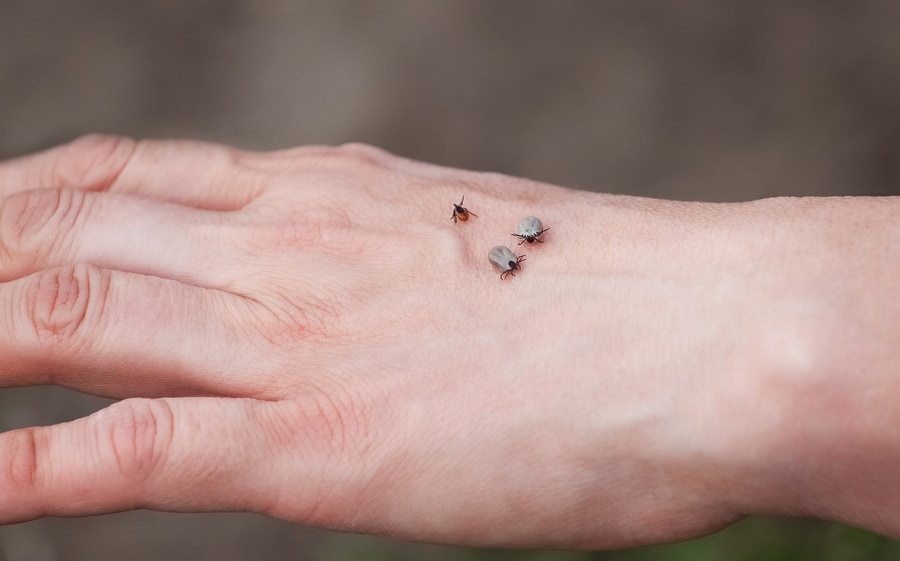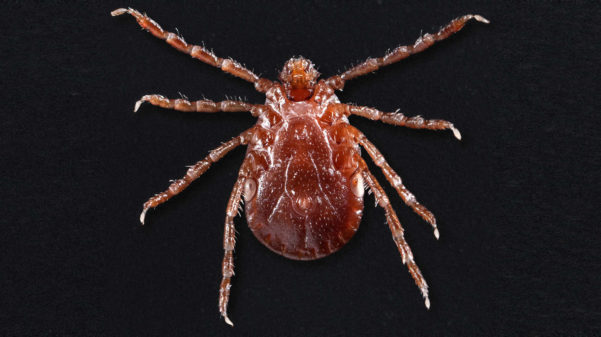READY TO GET STARTED?
REQUEST A FREE ESTIMATE
Fill out the form below or call (888) 466-7849 for a free, no-obligation estimate.

Nothing puts a stop to outdoor summer fun faster than an encounter with a tick or flea. A bite from either is irritating and sometimes painful, but they can also cause a host of issues down the road.
Bites from fleas are typically small, red bumps with a small halo that normally appear in a sequence of three to four. While pet owners are at a bigger risk of dealing with flea infestations, wandering wild animals or strays in your neighborhood can bring fleas in your yard causing a headache.
For humans, flea bites are very irritating, and the itch can lead to increased scratching. The excessive scratching can break the skin and cause secondary infections from bacteria. For your furry family members, flea bites can lead to severe dermatitis from a flea allergy, possible transmission of tapeworms, or anemia.
These bites can go away on their own; the use of calamine lotion can help with the itch. The best practice however is flea prevention. Fleas thrive in lawns with tall grass, so keeping lawns cut low and maintained will help with flea infestations. Also, regularly bathe and treat pets with preventative treatments year-round.
Ticks, like fleas, rely on tall grass to have access to hosts. They will position themselves at the very top of a blade of grass. Once a host brushes past, they will have the opportunity to bite and attach. Deer ticks, which are very common here in the South, fortunately do not always carry disease, and if they do, they would need to feed for up to 48 hours before a disease can be transmitted. This is why inspection of yourself and your family members after spending time outdoors is essential. Removal within 24 hours reduces your chances of being exposed to tick-borne illness, like Lyme disease.
When removing a tick, it is very important to remain calm. Pull back any hair from around where the tick is located. Find the head, and using tweezers, grasp the tick as close to the skin as possible. DO NOT grasp the body of the tick as this can squeeze the tick’s blood into the skin. Once you have a firm grasp on the head, pull in a straight motion, outward. Be sure to not twist when you pull as this can cause a tear, leaving the head to stay attached to the skin. Clean where the bite occurred and immediately flush the tick down the toilet or wrap tightly in tissue/paper towel and place in a trash can with a lid.
If you are going to be out in heavily wooded areas where the grass is unkept, wear long pants or high, light colored socks. Make sure to remove woodpiles from around your home as this makes a great hiding place for ticks. Using an insect repellant with DEET when outdoors is another great preventative measureto take against a possible tick encounter.
If you are having issues with fleas or ticks, contact your local pest control company or schedule a free inspection now.

For the first time in fifty years, the U.S. has its first known invasive tick.
The longhorned tick, first discovered in November 2017, has been found in New York, Pennsylvania, Maryland, Virginia, West Virginia, North Carolina, and Arkansas. Professionals have had unsuccessful attempts to exterminate this particular species, leading it to be classified as an invasive species.
Normally an animal-attracted pest, the longhorned tick has been known to carry and transmit diseases like Lyme, spotted fever, and Severe Fever with Thrombocytopenia (SFTS). SFTS symptoms include fever, vomiting, multiple organ failure, along with many other symptoms. Fortunately, of the ticks tested here in the U.S., no human diseases have been detected.
As always, use the normal precautions towards tick exposure:
Continuing to follow these precautions will help to prevent tick exposure for you and your family members.
How Much Does a Termite Inspection Cost?
Pest Control for Basements and Attics
Wildlife Control: What Threat do Rodents Pose to Humans?
Exterminating: Rain and the Bugs it Brings?
Termite Treatment: Termites vs Flying Ants